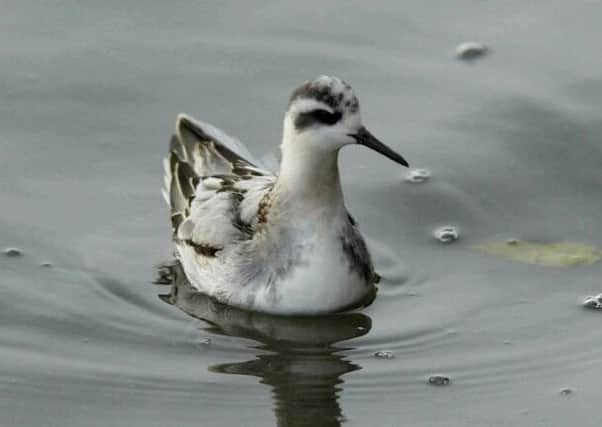Birdwatch: The grey phalarope is blown into town


It is an odd bird in several ways. The grey phalarope is a wader that spends most of its life on the water and has webbed feet and lobes on its legs like a coot to help it swim.
It also has dense feathers on the breast that help it float like a duck, or small cork, on the sea.
Advertisement
Hide AdAdvertisement
Hide AdBut while this is an advantage for most of the time in strong winds this extreme buoyancy can result in them being swept to inshore waters or even, as in the case of the Tophill Low bird, well inland.
In summer plumage grey phalaropes are splendid looking birds with a black cap, white cheeks and rich chestnut underparts. But another oddity is that it is the females that are the biggest and most brightly coloured and live like the males in almost every respect apart from laying the eggs.
The females arrive first in the spring, establish the breeding territory, court the males when they appear and then leave the males to incubate the eggs and rear the young.
The bright summer plumage has resulted in the name red phalarope that is given to this bird in North America but British birders usually see them in their black and grey winter garb which is why they are called grey phalaropes here.
Advertisement
Hide AdAdvertisement
Hide AdGrey phalaropes, and their cousins the red-necked phalaropes, have an extraordinary way of feeding, spinning round and round in the water to bring small creatures to the surface, picking up this food without slowing down as they spin.
At sea they feed over patches of floating seaweed to find these organisms and have even been recorded picking these off a whale’s back.
Another bird from the far north, the long-tailed duck, is also being seen, both off the Yorkshire coast and inland with a first winter male at the Rother Valley Country Park, South Yorkshire and a female at Pugney’s Country Park near Wakefield.
The males have long curly tails and in winter plumage are mostly black and white with a shapeless black patch on the cheek while the females are more brown and white but with the same cheek patches.
Advertisement
Hide AdAdvertisement
Hide AdAlso seen inland were dark-bellied brent geese at the Rodley reserve, Leeds and at Pugney’s Country park while an Eurasian white-fronted goose was at Edderthorpe Flash, South Yorkshire.
The first smew of the winter, a redhead, was seen on Sunday at Hornsea Mere and two tundra bean geese and a white-fronted goose were among other birds there while other sightings along the coast included Richard’s pipit and shore larks at Spurn, a short-toed lark and a flock of 21 shore larks at Long Nab, Burniston, black redstart on the seafront at Bridlington and Siberian chiffchaff at Flamborough Head.
Waxwing numbers continued to rise across the region with more flocks arriving along the coast and quickly moving inland.